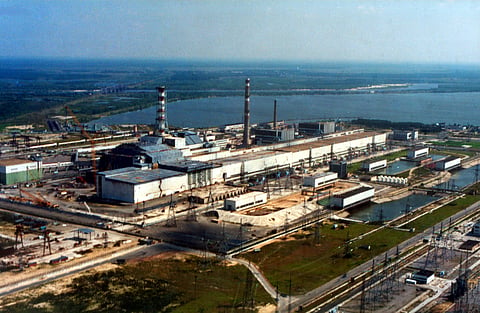

Russian airstrikes on Wednesday caused the Chernobyl Nuclear Power Plant—decommissioned since the 1986 reactor meltdown—to be cut off from its external power supply, forcing the facility to rely on emergency backup generators.
According to Ukraine’s Energy Ministry, the strikes hit infrastructure in the city of Slavutych, a town built to house Chernobyl’s displaced workers and residents, cutting off electricity to the site. The loss of power triggered what Kyiv described as an “emergency situation” affecting the New Safe Confinement (NSC), the massive steel arch built to seal the damaged Unit 4 reactor and prevent radioactive leakage.
The International Atomic Energy Agency (IAEA) confirmed that while diesel backup generators are currently sustaining the facility, fuel reserves are sufficient for only 48 hours unless additional deliveries are made. The IAEA stressed the importance of restoring external power, which is critical for ventilation, monitoring systems, and maintaining containment operations at the site.
The attack on Chernobyl was part of a broader wave of strikes targeting Ukraine’s energy grid. Videos shared on social media from Dnipropetrovsk showed widespread blackouts immediately after missile impacts on power facilities there. Ukrainian officials have accused Moscow of deliberately escalating attacks on energy infrastructure as winter approaches, leaving civilians vulnerable and threatening nuclear safety.
Some analysts suggest the strikes may also be retaliation for repeated Ukrainian shelling of the Zaporizhzhia Nuclear Power Plant (ZNPP), the largest nuclear facility in Europe, which has been under Russian control since 2022. Just last week, ZNPP experienced its longest blackout yet—seven days—after shelling severed external power lines. The plant narrowly avoided disaster by relying on diesel generators to cool spent fuel rods and sustain safety systems.
Kyiv has accused Russia of shelling ZNPP to frame Ukraine, but independent investigations in 2022 concluded that artillery that struck the plant originated from Ukrainian-controlled territory to the north. Despite these findings, both sides continue to trade accusations, with nuclear safety experts warning that either site could become a flashpoint for disaster if hostilities escalate further.